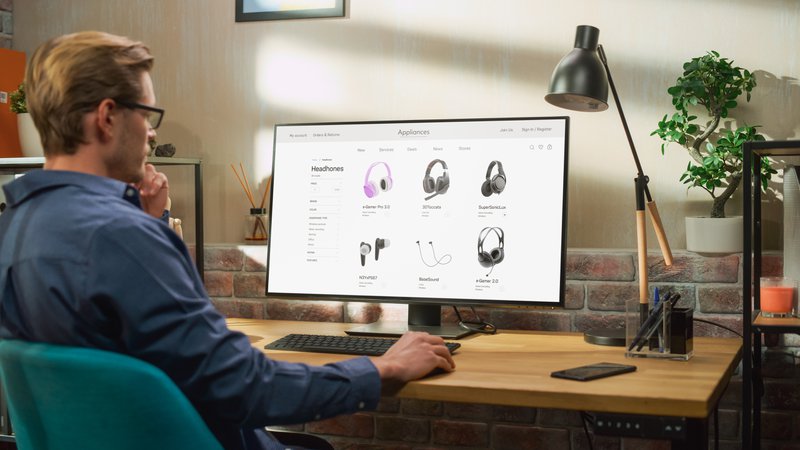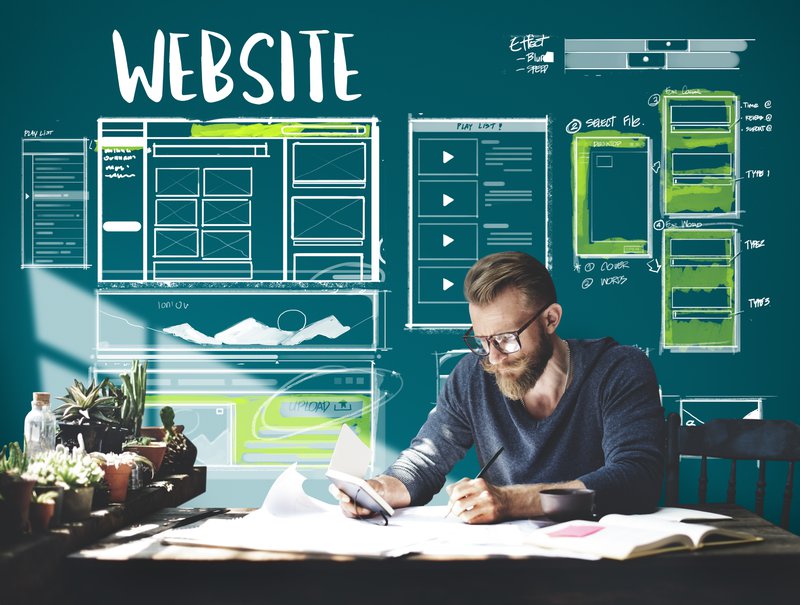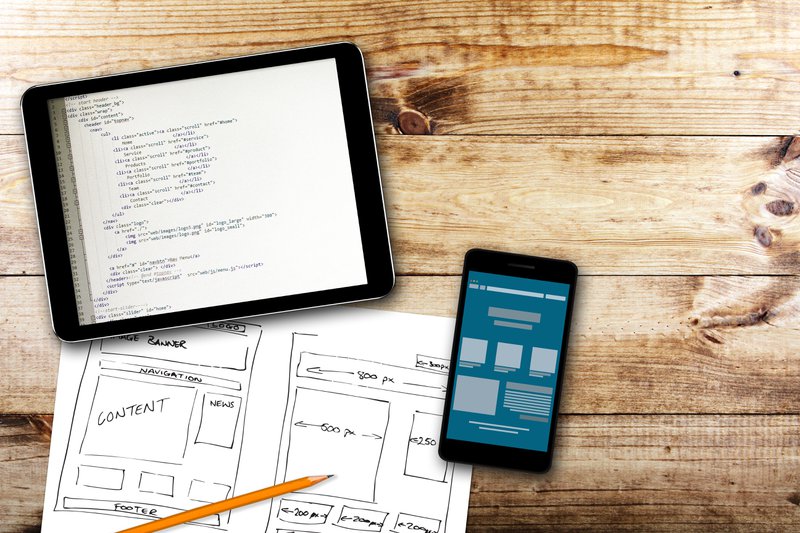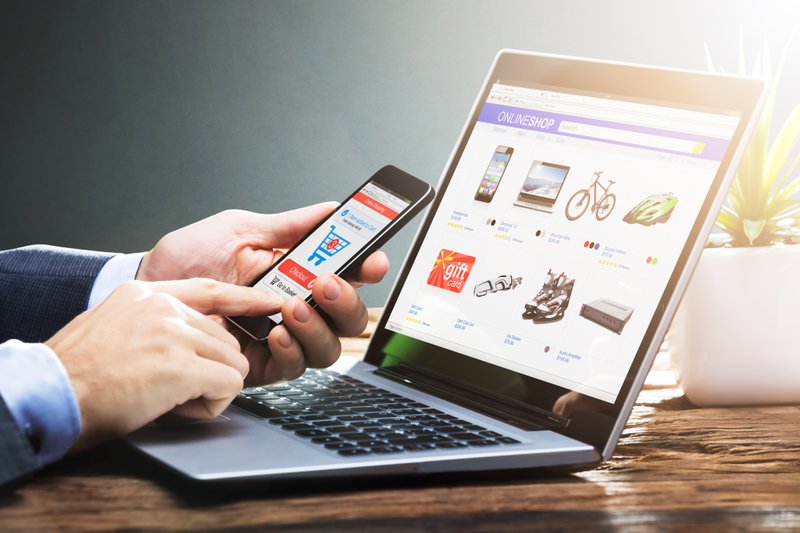Pandemic lockdowns gave traditional retailers two options: go digital or go out of business—resulting in an unprecedented surge of eCommerce stores. Since then, new trends have only continued to emerge within the eCommerce sphere.
Today, online stores are going ‘headless’ in droves. It begs the question: what is headless eCommerce, and what does having a headless storefront mean for your brand and bottom line?
What Is Headless Storefront Implementation?
A headless storefront is a fresh and new approach to eCommerce. It rests on shifting from a tech-led business strategy to a content-led one. By doing so, companies stand to enjoy greater agility in experimenting with new features on their websites.

Moreover, the modern website has two main parts: the front end and the back end. The front end is the side that customers see. It includes the store theme, design, images, videos, content, product catalog, and all other features you would like the customers to experience.
On the other hand, the back end contains tools that keep your system up and running. It includes code, databases, and other technical things only your company and the developer can view.
The problem with traditional eCommerce stores is that when you implement changes or even want to test the waters, you also need to edit codes on the back end. That increases time-to-market (TTM) and can even risk the website or app as a whole—posing a slew of potential consequences from data erasure to revenue loss.
In headless commerce, both sides are separated so that you can deliver a more consistent, faster, and more agile shopping experience to customers. A headless storefront implementation helps eCommerce stores deliver a better user experience.
How Does Headless Commerce Work?
In headless commerce, the front end is “decoupled” from the back end. This means the user interface (everything the customer views and interacts with) becomes independent of the back-end functionality.

Both ends communicate via application program interfaces or APIs—software that allows you to make quick and easy changes to the front end without disrupting the back-end processes.
A headless storefront’s back end can communicate with anything in the store by sending the right API calls. Whether it’s a mobile, laptop, smartwatch, or any other operating system doesn’t matter. Also, with API integration, you can choose different back-end and front-end software depending on your needs.
This makes it easier for a headless storefront to switch to a content-led marketing approach. In a headless store, you can swiftly create new marketing campaigns and promotions, reorganize the storefront, add visual merchandizing features, optimize the checkout page, and so much more.
Separating the two platforms enables brands to deliver a more agile and consistent shopping experience to customers.
Headless Commerce vs. Traditional Commerce: What’s the Difference?
The advantages of going headless have earned it considerable traction. According to Forbes, headless technologies already received over $1.65 billion in funding in 2020–2021, and that number’s only expected to grow as online stores race to keep up with emerging market trends.

The bottom line is that headless storefronts are the future of eCommerce. Here’s how they solve the problems traditional stores face:
Traditional Commerce
The back and front ends of traditional commerce are inextricably linked. The content and codes for the entire store used on the front end are located on the back end.
On the positive side, traditional stores are easy to develop as they come with pre-installed themes in the back end. However, they are limited when it comes to customizability and the overall flexibility of the store.
For example, if you want to change the front-end layout per the current season or trend, you need to tinker with the back-end code. This is time-consuming and introduces the risk of the front end breaking because of a simple coding error.
Rigid site programming and downtimes keep money out of your pocket. This lack of agility is one of the biggest drawbacks of traditional commerce.
Headless Commerce
Headless commerce is all about flexibility and fluidity. A headless storefront has far more options to customize and optimize the store for a better user experience. This helps you create a next-level brand experience.

Think of Apple. Their website and app highlight new products by taking the user on a journey bolstered with rich content and intelligent design along the way.
This kind of approach is difficult to implement in a traditional store. Customers value a personalized experience before they decide to make a purchase. You can easily add features such as visual merchandising, micro animations, and video embeds to a headless storefront.
Overall, the headless storefront provides a better front-end customer experience while allowing far more room for customization. You can add new features, interact with your customers, and provide a great consumer experience without compromising your store’s load time or risking back-end functionality.
The Benefits of Headless Commerce
Today’s brands must orchestrate stunning experiences that meet their users’ ever-rising expectations. The most successful brands are those able to embed themselves in a consumer’s mind. This requires delivering a consistent brand experience and conjuring a deeper level of engagement.

Headless commerce boasts several benefits that allow businesses to scale and stay ahead of the competition. They are:
Customization Options
The main benefit of a headless approach is that it is highly customizable. It doesn’t limit you to templates that deliver only a single kind of customer experience.
Experimenting with content, design, and user experience is simpler and comes with little to no risk of affecting the back-end processes. In other words, you don’t have to make any design sacrifices. This gives you endless possibilities to customize the user experience. You can embed a brand video or even gamify the entire user experience.
For example, Pepsi leveraged augmented reality (AR) to create a promotional campaign featuring top football players. The users could scan a code on Pepsi cans and play an AR game with the players.
A little creativity goes a long way in increasing customer engagement and brand recognition!
Best of all, the possibilities stretch as far as your imagination. You could provide a 3D display of your merchandise, deliver personalized product recommendations, create a shorter path to check out, and much more. With a headless storefront, you can even split-test and optimize the customer experience.
Speed Improvement
In an attention economy, speed is everything. When a customer lands on your website, you have mere seconds to grab their attention and lead them to the product they’re looking for.

If your website is slow, you are actively losing customers. Believe it or not, 40% of users abandon websites that take longer than 3 seconds to load!
The thing is, traditional commerce platforms weren’t built with speed in mind. A headless architecture flips the script and decreases page loading times—elevating the user experience and boosting sales.
Headless commerce works with APIs and can integrate dynamic content. It delivers content faster and improves the overall speed. Speed is also one of the most important SEO factors, so going headless can increase your website’s search engine rankings.
Customers can easily switch between blogs, product pages, the homepage, and checkout sections without waiting for individual pages to load. Fewer bottlenecks mean happier customers and more successful checkouts.
Fewer Errors & IT Support Needs
Importantly, headless architecture reduces the go-to-market time. That means you can implement new marketing campaigns at breakneck speeds. This is because changes can be made directly on the front end.

You don’t have to rely on the entire development team for IT support whenever you wish to make changes to your storefront. A front-end developer can easily implement new content and design without any errors.
You can also make the website dynamic and include features such as the option to switch to a different currency or language. This way, you’ll be able to cater to international customers without investing in additional IT infrastructure.
Flexibility
Headless architecture is driving innovation in personalization. Imagine personalizing your store to the point of directly catering to each unique individual. With a headless storefront, brands can personalize product catalogs for each client and even individual customers.
You can also build diverse themes and landing pages and test how customers feel about them. Since headless commerce is quite flexible, even the biggest companies can easily test out new customer experiences. If the feedback is positive, they can be fully implemented quickly. If it’s not, course corrections are just as swift.
Integration Benefits
Different processes coded in different languages prevent integration. This can negatively impact the customer experience. Headless solutions provide the ability to link a wide variety of tools via API.

The smooth transition and connections via API make it easier for software systems to communicate with one another.
Headless architecture also enhances the multi-channel customer experience. You can integrate different channels and deliver seamless content via a single platform. This way, you will save time and money managing separate communication tools for each channel.
Content editors can manage content across multiple channels without IT support. This frees up web developers from tackling more important tasks. This small yet important benefit will improve your team’s productivity and make your business more scalable.
How Headless Commerce Changes the Customer Experience
Headless commerce systems allow you to create subsets of content for different applications and websites.

The headless CMS’ back end has location-specific channels designed to draw out the matching message for the right audience. This means you send the right information to the right set of users and can, in turn, enjoy higher conversion rates.
This is just one aspect of how headless commerce improves the user experience. In traditional commerce systems, customers can experience a huge disconnect because prices, promotions, inventory, and product descriptions aren’t synced across all servers in real-time. Headless architecture doesn’t have this problem it frees you to update information across different platforms in real time.
Here’s how headless commerce changes and improves the overall customer experience.
Instant Design and Logic Updates
As mentioned, sites built on traditional commerce systems aren’t updated in real-time. From uploading blog content to something as simple as adding a discount promotion to a product, it could take hours for changes to go live. That creates a negative user experience because outdated data confuses users at best and frustrates them at worst.

However, with headless commerce, all the changes and optimizations occur instantly. Therefore, users experience new designs, receive promotions, and view up-to-date product catalogs and information as you dictate, not how your website does.
In eCommerce, the brand that can create urgency and communicate wins. Marketers can also change their strategies to align with viral trends and seasons.
For example, if you want to redesign your storefront to an end-of-the-year holiday theme, you don’t have to wait weeks to create and implement the code. Your team can create a niche web store for individual clients, set up a blog, or launch new microsites. Headless knows no bounds.
Unique Customer Experiences
Companies can no longer afford a bad user experience. One negative experience is enough to send a third of online buyers running for the hills, never to return. That’s why crafting unique customer journeys is the greatest responsibility for eCommerce sites or apps today.
The marketing team behind-the-scenes needs to design, build, and launch storefronts to support all the channels relatively quickly and efficiently. The headless systems can use customer data for the personalization of an online store or mobile applications.
Not to mention, headless systems allow developers to create multiple front ends. All the front ends are attached to a single backend, making it easier to integrate into various devices and screens.
How Headless Commerce Works With Your Omnichannel Strategy
At its core, an omnichannel strategy entails showcasing the same inventory, pricing, and promotions across different channels (online store, mobile app, etc.). It also means creating unique experiences on different channels depending on how customers interact with your brand (laptop, tablet, smartphone).

With an omnichannel strategy, customers can switch channels and still see consistent messaging and inventory. That builds trust and credibility while ensuring a smooth customer experience. Here’s how headless commerce works with your omnichannel strategy:
Seamless Integration
In an omnichannel strategy, you can create a unified unit working on the same goal instead of different units working towards separate goals. Headless architecture’s API integration means you can integrate inventory management, sales, and marketing to ensure they all work toward the same goal. APIs unify various software and tools that your team can use to provide a seamless experience to shoppers.
Quick Adoption of New Tech
Today’s shopping behaviors look different than before or even just a few years ago. Nowadays, speed and digital adoption are the names of the game. A good example of this is contactless payments. Public safety concerns made them more pervasive than ever.
The truth is that retailers can’t keep coding exclusive tech solutions. However, they can use headless commerce’s APIs to power the perfect technology for their business.
Personalization
Since a headless storefront is decoupled and runs faster, retailers can more readily add personalization features. Retailers can develop a solution that combines customer insight across channels and optimizes their store according to what the users are looking for.
Once an omnichannel strategy is in place, headless commerce will support the overall digital customer experience and improve the in-store experience.
The Challenges of Headless Commerce
As promising as headless commerce is, it’s still fairly new and carries its own set of challenges:
Implementation Problems
Though headless commerce can make a website faster and more flexible, decoupling involves complex, modular choices. It makes your eCommerce stack complex, which can make fulfillment tricky.
If APIs aren’t implemented correctly, they can impact the entire online store and cost you more time and money to fix the issues. A better way to go about it is to implement headless processes one step at a time.
Expensive to Implement
Headless commerce is expensive to implement. Since it’s a premium model that lets you leverage several profitable elements (like customizability and personalization), it’s naturally going to be a bit pricier.
Security Challenges
If not implemented properly, it can create bugs prone to security threats. Since many APIs are being pulled into the front end, they can make your store vulnerable and affect its performance and security.
How Do You Shift to Headless Commerce?

Now that you clearly understand headless commerce and how it can benefit your company, let’s talk about how you can shift to headless commerce. Whether a new company or a traditional eCommerce business, here’s how you should consider going about it.
Check if It Is the Right Fit for Your Business
The first step to getting started with the transition is knowing whether it is right for your company. If you are willing to sacrifice a pre-built, templated storefront with limited functionality for faster customization and a unique experience, you should go for headless commerce.
That being said, you should have a technical team if you want to launch your new solution. Headless commerce has its pros and cons, but if you’re willing to sacrifice ease for customizability and personalization, then it may very well be the path for you.
A headless system is a great option if you’re considering more digital channels. It can help B2B businesses leverage the flexibility to deliver content faster, optimize their omnichannel presence, and elevate the overall user experience.
Implement on Your Existing Platform
The best thing about the transition is that you don’t need to learn new tech or adapt to new platforms. It can be overwhelming to have a drastic transition to new tech solutions. But with headless commerce, the transition is smooth and easy if you hire the right team of developers who will ensure that the transition goes smoothly.

You can also opt for a hybrid eCommerce store. It is an innovative approach to building the headless storefront while retaining some traditional eCommerce processes.
Things to Consider in Shifting to a Headless Storefront
So, how do you know when it’s the right time to shift to a headless storefront? Here are some signs that your brand might be itching to go headless.
- Your website’s site speed is getting slower
- Your brand is non-customizable and looks bland
- The store can’t run promotions at all because it requires great customizability
- Your content takes forever to update on search engines
If your business is experiencing any of these pain points, now is the right time to build a headless storefront. With the right strategy, you’ll be able to set up a flexible store that makes it easier to engage with customers.
Moving Forward With Zobrist
Headless commerce is the future of eCommerce and stands to benefit retailers hugely. If you’re considering the transition, you’ll need to choose a platform that’s not only flexible but also provides a seamless transition. Step into the future of eCommerce with a demo today.




